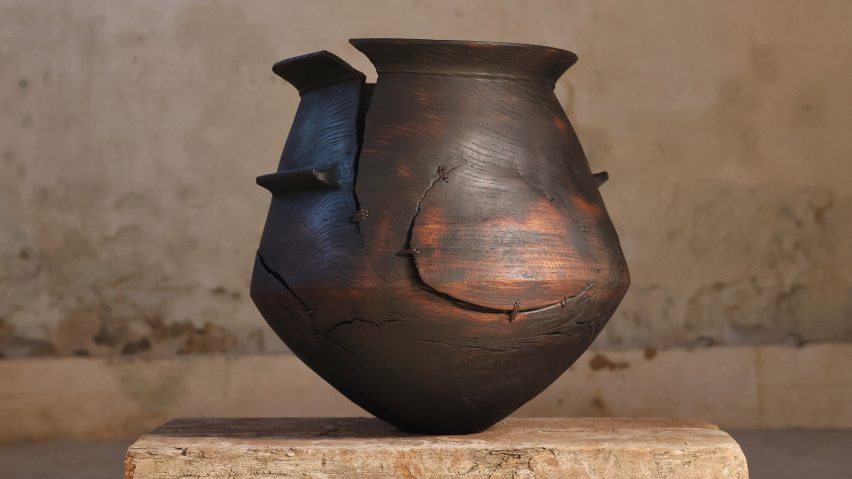Luxury brands should donate one per cent of their revenue to the struggling crafts sector to protect the skills their businesses often depend on, writes Katie Treggiden.
The definition of luxury is evolving. Quality and scarcity are no longer enough to justify high prices. Increasingly, buyers are looking for a story, and often that story is delivered through craft – rarefied skills, time-honoured processes, meticulous attention to detail, hours invested into every stitch, cut and curve.
Of course, the manifestation of design has always happened through making. Without hand skills, the output of our industry would be little more than a pile of drawings or a harddrive filled with CAD files. Despite all this, we seem to be turning a blind eye while British craft plunges into crisis.
Even established makers are under pressure
Last year, The Guardian reported that enrolment in creative GCSE subjects had fallen by 40 per cent since 2010. Meanwhile, creative arts courses at English universities continue to face funding cuts.
Once students graduate, government-funded apprenticeships are not designed with the micro-businesses that comprise the crafts sector in mind, so they are rarely fit for purpose. This has led to an ageing sector, with few opportunities to pass on skills.
Even established makers are under pressure. The cumulative effects of Covid, Brexit and the energy crisis has had a brutal impact. Too many craftspeople are having to make impossible choices between buying materials, powering their workshops, and paying themselves.
Mary Lewis, endangered crafts manager at UK advocacy charity Heritage Crafts, reports being contacted by makers who are considering stepping away from craft on a weekly basis. A 2022 Crafts Council survey found that 48 per cent of makers have been impacted by rising costs and 49 per cent said that finding external funding was a priority.
"Makers won't give up their passion easily, but many are barely earning a living wage," Crafts Council CEO Natalie Melton told me. With fewer people coming into craft as a profession and existing makers seeking more stable employment in response to such precarious circumstances, we risk losing makers – and making – from our industry altogether.
Because the issue is not just individual makers, but the impact on hand skills now and into the future. Research by Heritage Crafts has mapped the crafts sector as a complex eco-system of interdependent skills, supply chains and economies of scale, which means that when one business closes, it has a knock-on effect.
Craft is best taught in person – literally from hand to hand – making lost skills difficult, if not impossible, to revive. The Heritage Crafts Red List highlights five crafts that have become entirely extinct in the last generation, plus another 62 that are critically endangered and 83 that are endangered.
We risk losing the hand skills our industry relies upon
British companies are already having to look abroad to find quality craftsmanship. When Alli Abdelal established Ruskin England to make luxury bags using the fleece of the Lake District's iconic Herdwick sheep, she wanted the full line of provenance within the UK.
But after sampling with British makers, she made the difficult decision to look beyond the UK and work with artisans in Rome. "The level of intelligence, material knowledge and empathy required for this kind of work is not always obvious from the outside," she told me.
UK craft is in crisis and we risk losing the hand skills our industry relies upon. It's time for the luxury brands who profit from makers' labour to step in and start supporting craft.
It is already happening in pockets. The Queen Elizabeth Scholarship Trust (QEST) provides scholarships, apprenticeships and grants to UK-based craftspeople with funding from the Royal Warrant Holders Association – those brands granted a mark of recognition for the ongoing supply of goods or services to the Royal Household.
Internationally, the Michelangelo Foundation – a non-profit that celebrates and preserves craftsmanship – was established by board members of the Swiss conglomerate that owns Cartier. And even small brands and designers are making contributions – interior designer Rose Uniacke donates all the profits from her Remnant Weave cushions to Heritage Crafts, which gives more than £100,000 per year in training bursaries to craftspeople.
But we need a more cohesive and transparent model that the whole industry can get behind. Perhaps something akin to 1% for the Planet, which invites companies to donate one per cent of their turnover to environmental causes. One per cent of the UK's £2.09bn UK handbag market alone would go a really long way.
"It could be transformational for the sector"
And there is support for such a scheme. "Luxury is rooted in craftsmanship and so it is only right that luxury brands support this," said Melton. "It would be amazing to see them contributing a percentage from every product sale – it could be transformational for the sector."
Abdelal agrees: "We would love to support such a scheme. And I hope that we could do more by sharing what we have learnt." She makes a good point because it's not just about the money. When you sign up to something like 1% for the Planet, you join a network of like-minded companies to collaborate and share learnings.
If we can spare one per cent for the planet, perhaps we can spare another one per cent for craft.
Katie Treggiden is the founder and director of Making Design Circular, a membership community and online-learning platform for sustainable designers and makers, and the author of Broken: Mending and Repair in a Throwaway World (Ludion, 2023).
The photo shows a vessel from the Novus collection by woodturning studio Ash & Plumb.
Dezeen In Depth
If you enjoy reading Dezeen's interviews, opinions and features, subscribe to Dezeen In Depth. Sent on the last Friday of each month, this newsletter provides a single place to read about the design and architecture stories behind the headlines.

